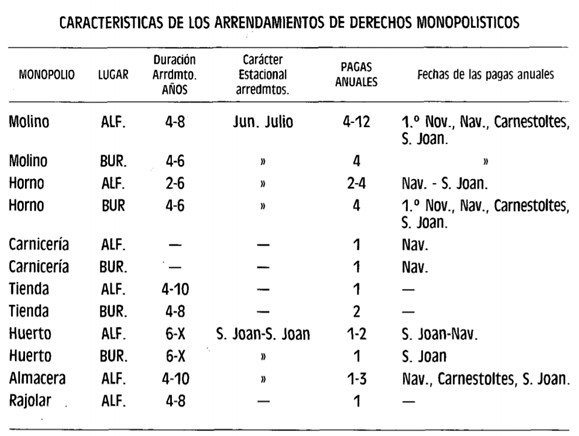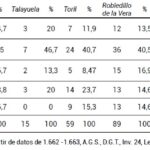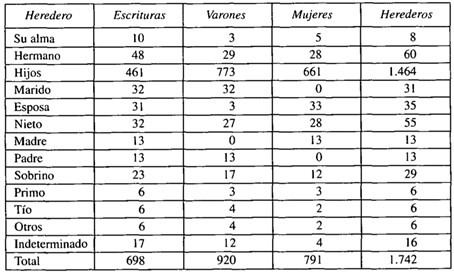
During modernity, there was a clear predominance of nuclear families, which were headed by married couples with children and comprised more than a third of the population. Apart from Laslett’s considerations, it is possible to study the functionality of the members who make up families from the time when young people enter into marriage until their dissolution with the death of one of the spouses, including the birth, upbringing or emancipation of children. In this sense, we can see how parents took in their newly married children and vice versa, where widows and widowers needed assistance. In Cabezuela, co-residence between neighbours triples the values obtained following a fiscal count, approaching levels of complexity unbefitting of the geographical context of Extremadura. Given the problem that the sources do not specify the age of the head of the family and their spouses, it is assumed that this is the moment at which the married couple takes in their newly married daughter or son. In this sense, it is observed that the parents and parents-in-law welcome the married couple more than the other way round. Of the 18 houses shared by this type of family in Cabezuela, 13 (72.2%) are owned by the parents and in-laws of the newly married couple. The remaining houses belonging to sons or sons-in-law are always owned by the widowed mothers and mothers-in-law, which is therefore a question of age. Polynuclear families, on the other hand, are the result of two nuclear families with or without children living together and related to each other. Faced with a crisis, the families deployed a series of formulas for fostering, living together and supporting the livelihood of their members, which becomes complex as they fulfil the function of protection.
Collection: Statistics
Project: 3. Rural world and urban world in the formation of the European identity., 4. Family, daily life and social inequality in Europe.
Chronology: XVII
Scope: Secondary Education, Baccalaureate, University
Link: https://adeh.org/wp-content/uploads/2020/09/ADEH-2020-5-Elena-Xiomara-Paoletti-Avila.pdf
Resource type: Statistics
Format: Table
Source: Paoletti Ávila, Elena X., «La familia barroca a través de la venta de lugares en la tierra de Plasencia (c. 1663), Revista de Demografía Histórica, vol. 38, nº1, 2020, pp. 103–118.
Language: Spanish
Date: 2020
Owner: Álvaro Romero González (Modernalia)
Copyright: ©Elena Paoletti, ©Revista de Demografía Histórica
Abstract: Type of family structure in different provinces of the region of Extremadura in the mid-17th century
Image
Tags








